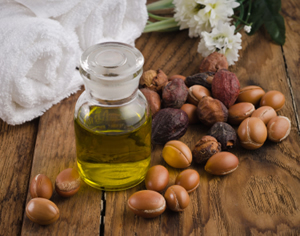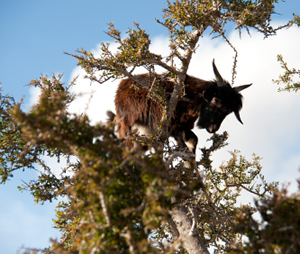Argan Argania spinosa

- Common Names
- Argan Oil
- Botanical Name
- Argania spinosa
- Family
Medicinal Uses & Benefits of Argan Oil
![]() How to Use|
Side Effects |
Plant & Garden|
How to Use|
Side Effects |
Plant & Garden|
- Medicinal Uses: * African
* Hair
* Skin Care
* Wrinkles
- Properties: * Emollient * Skin tonic
- Parts Used: Seed oil
- Constituents: fatty acids, sterols, tocopherols(vitamin e), phenols, carotenes, squalene
How to Use: Argan
Noted for its anti-aging effects, rich in vitamin E and fatty acids, argan oil helps to replace the diminishing amount of squalene that causes our skin to lose moisture. Argan oil softens and soothes, decreasing wrinkles and stretch marks. This oil is relatively new to worldwide markets, and while somewhat expensive it's commercial success supports both a sustainable industry for the Moroccan people as well as helping to protect an endangered species.1 So if you can fit it into your budget, Argan oil will protect and renew your skin in return. This luxurious desert oil is absorbed quickly and deeply to deliver deep hydration to damaged skin, and strengthen brittle hair and nails.
Preparation Methods & Dosage :Use as a skin care oil in massage blends and in hair care. Often combined with olive oil, which complements and resembles its chemical makeup.
Argan Side Effects: None noted
Plant Description

Goats climb the argan tree to feed
Agan trees are relics or the tertiary era and are well adapted to drought and other harsh desert conditions. The production of argan oil was once solely the domain of the women of the Berber tribes, however commercial exploitation has strained this valuable resource. Argan trees only exist in the southwest of Morocco and grow nowhere else.
Regional Traditions :African *
-
Moroccan Argan Trees Threatened by Climbing Goats
American Botanical Council
But despite the adaptability of Argan trees, current overgrazing by goats and commercial overuse of its wood has reduced the number of surviving trees to 50% of what it was 50 years ago, making its future uncertain.











